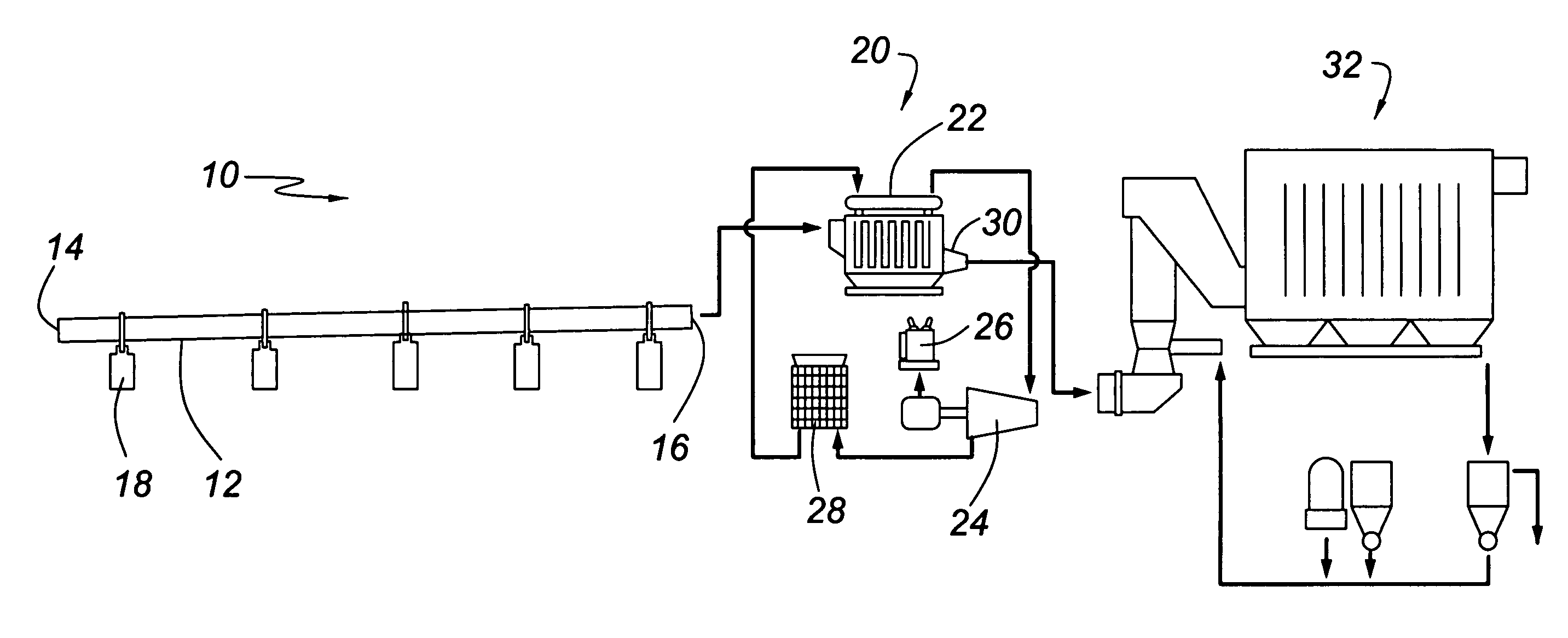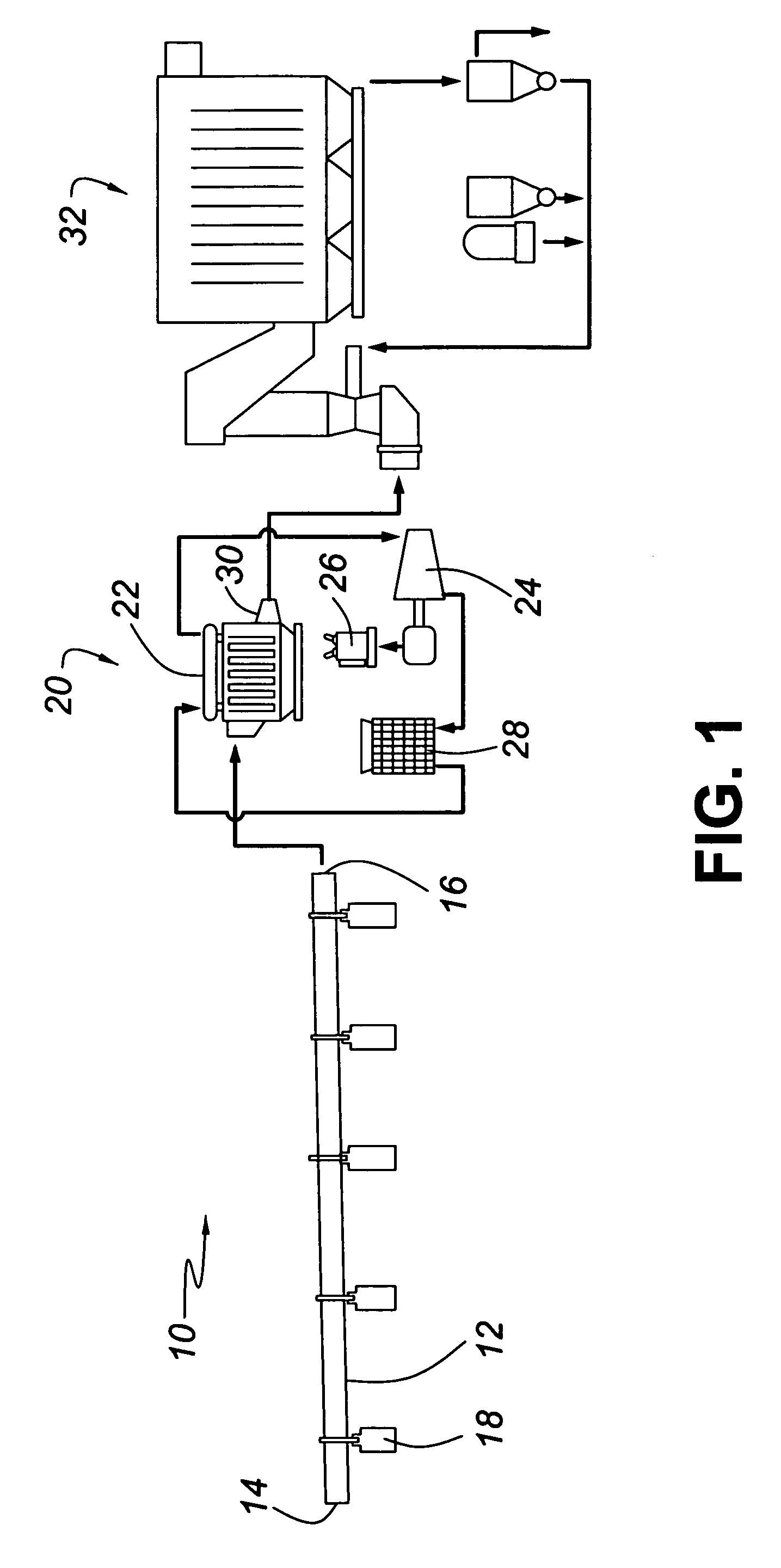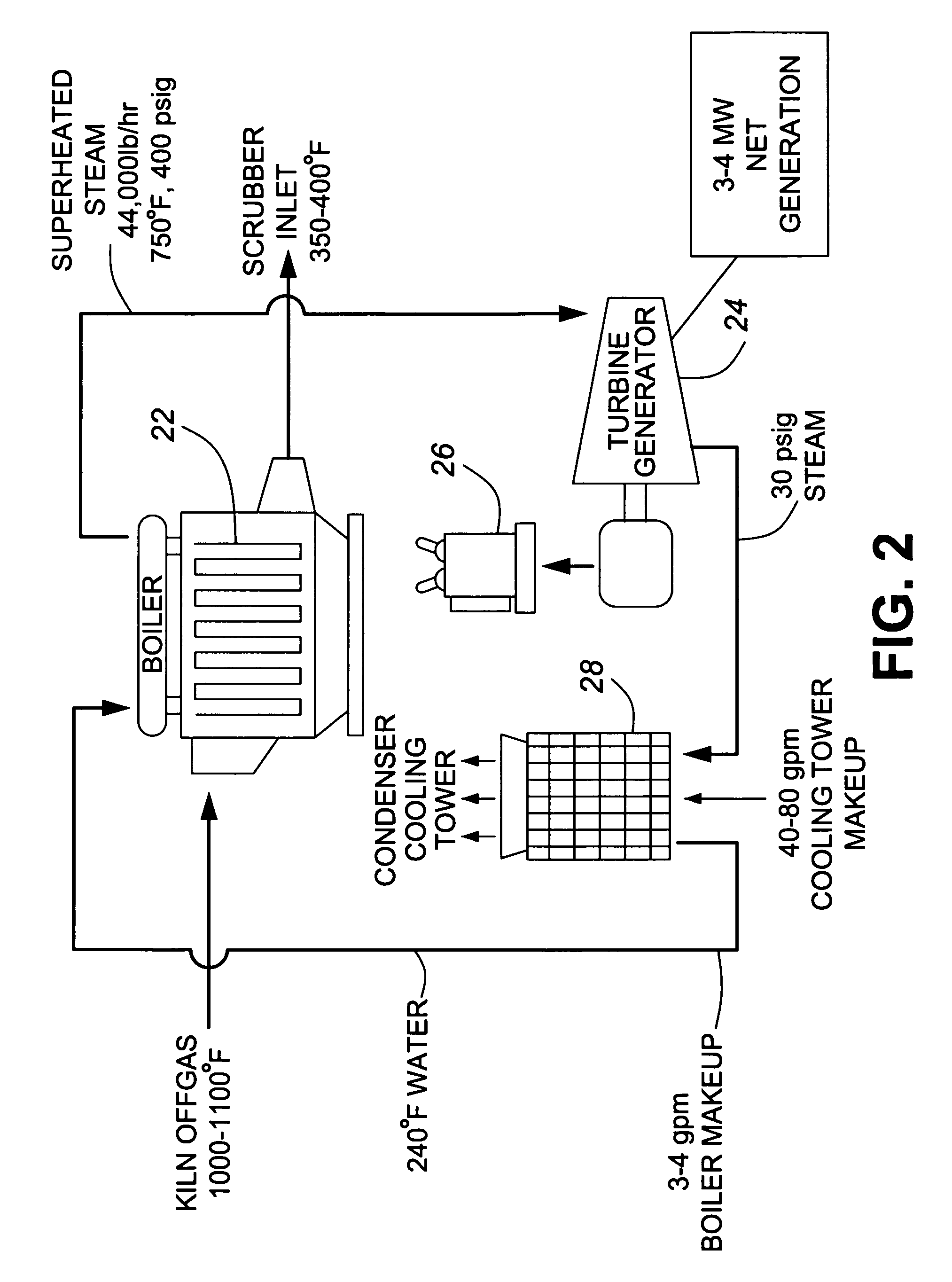Integrated lime kiln process
a technology of integrated lime kiln and process, which is applied in the direction of chemical/physical processes, magnesium compounds, sulfur preparation/purification, etc., can solve the problems of reducing the efficiency of the kiln, and requiring the use of fossil fuels, so as to achieve the effect of optimizing the pollutan
- Summary
- Abstract
- Description
- Claims
- Application Information
AI Technical Summary
Benefits of technology
Problems solved by technology
Method used
Image
Examples
Embodiment Construction
[0019]Referring now to the drawings and in particular FIG. 1 and FIG. 2, shown is an overall schematic illustration of the process according to one embodiment of the present invention. The process is globally referenced by numeral 10 and provides a straight kiln 12 of the rotary variety as is known in the art having an inlet 14 and outlet 16. The kiln is supported by supports 18 and these supports also function to permit rotation of the kiln. Specific details of this arrangement will not be discussed as any suitable kiln known for lime formulation can be selected and will be readily apparent to those skilled in the art.
[0020]The discharge or offgas exiting outlet 16 is transferred into a waste heat recovery power generation circuit, globally denoted by numeral 20. The circuit includes a boiler or reboiler 22, turbine generator 24 which turbine generator is in electrical communication with an electrical storage means 26. A condenser 28 is provided to condense any excess steam and rec...
PUM
| Property | Measurement | Unit |
|---|---|---|
| temperature | aaaaa | aaaaa |
| temperature | aaaaa | aaaaa |
| temperature | aaaaa | aaaaa |
Abstract
Description
Claims
Application Information
 Login to View More
Login to View More - R&D
- Intellectual Property
- Life Sciences
- Materials
- Tech Scout
- Unparalleled Data Quality
- Higher Quality Content
- 60% Fewer Hallucinations
Browse by: Latest US Patents, China's latest patents, Technical Efficacy Thesaurus, Application Domain, Technology Topic, Popular Technical Reports.
© 2025 PatSnap. All rights reserved.Legal|Privacy policy|Modern Slavery Act Transparency Statement|Sitemap|About US| Contact US: help@patsnap.com



